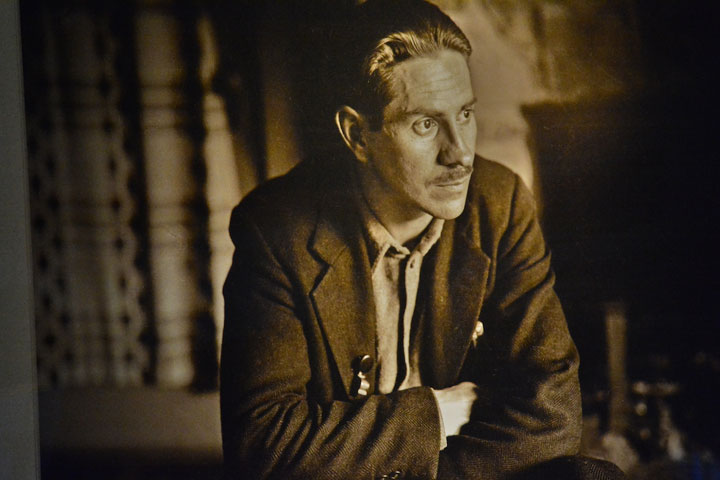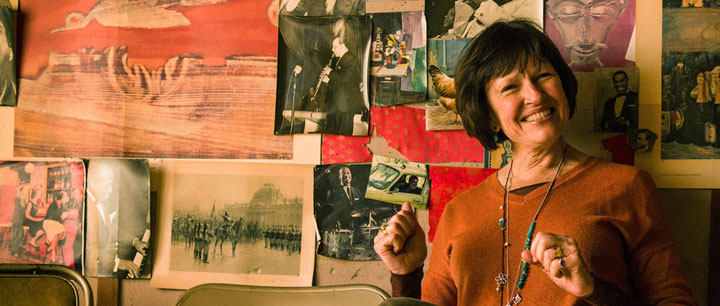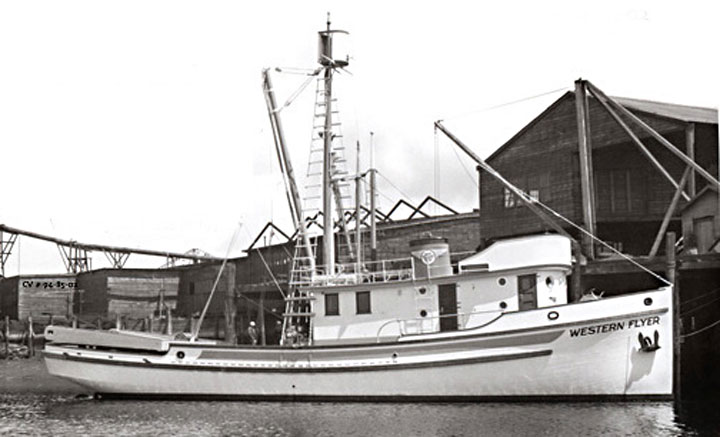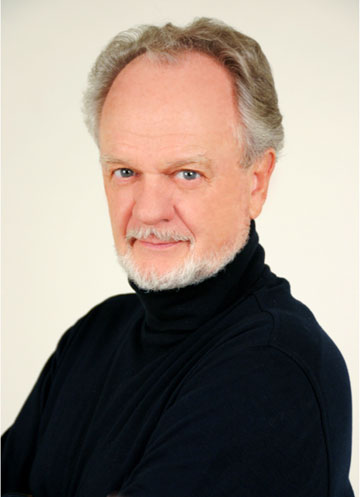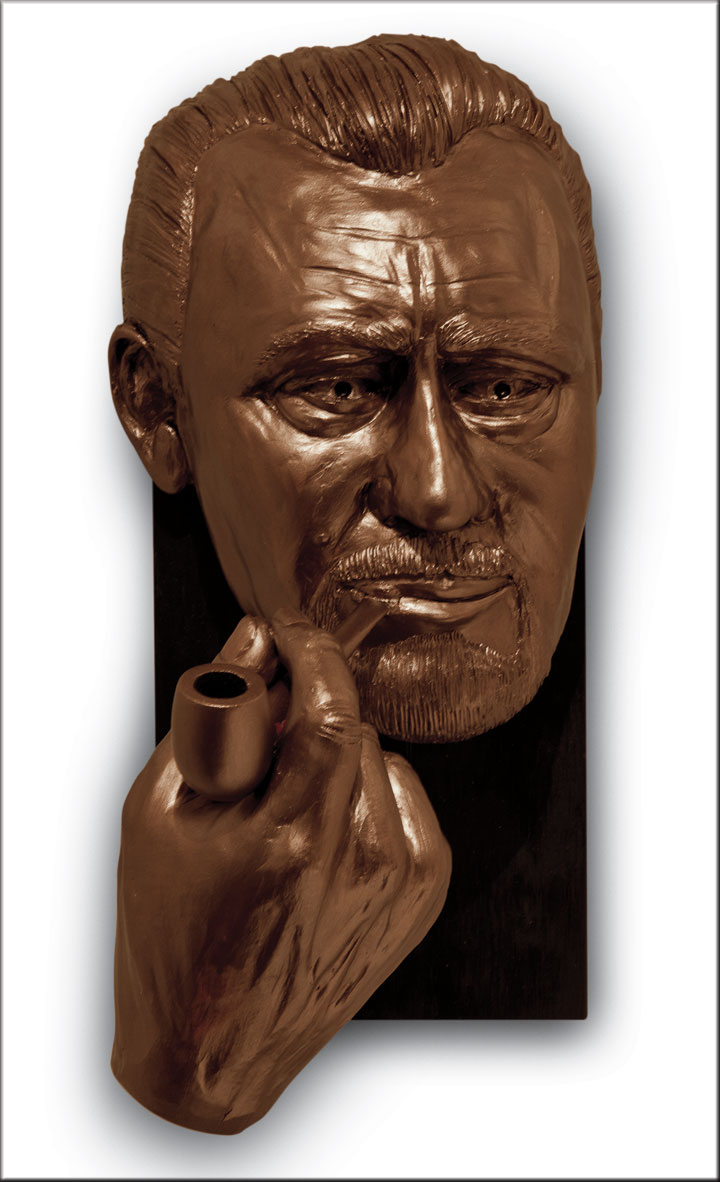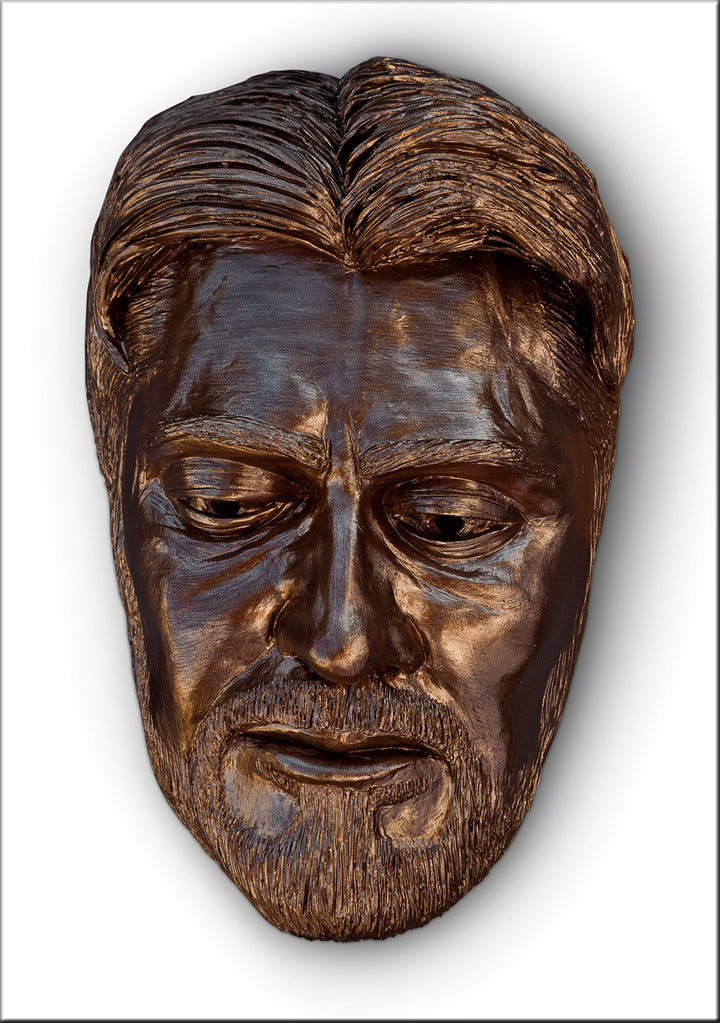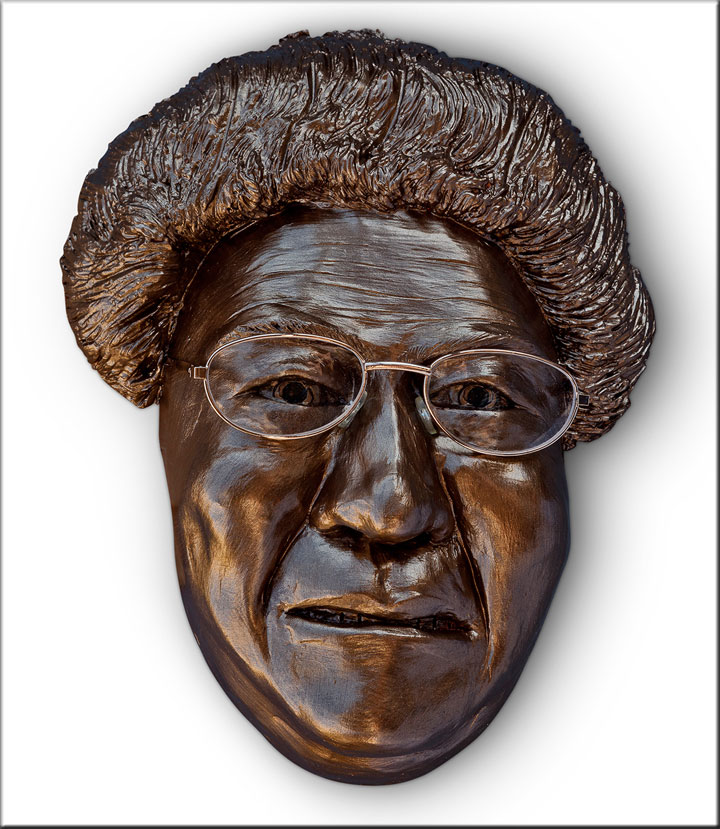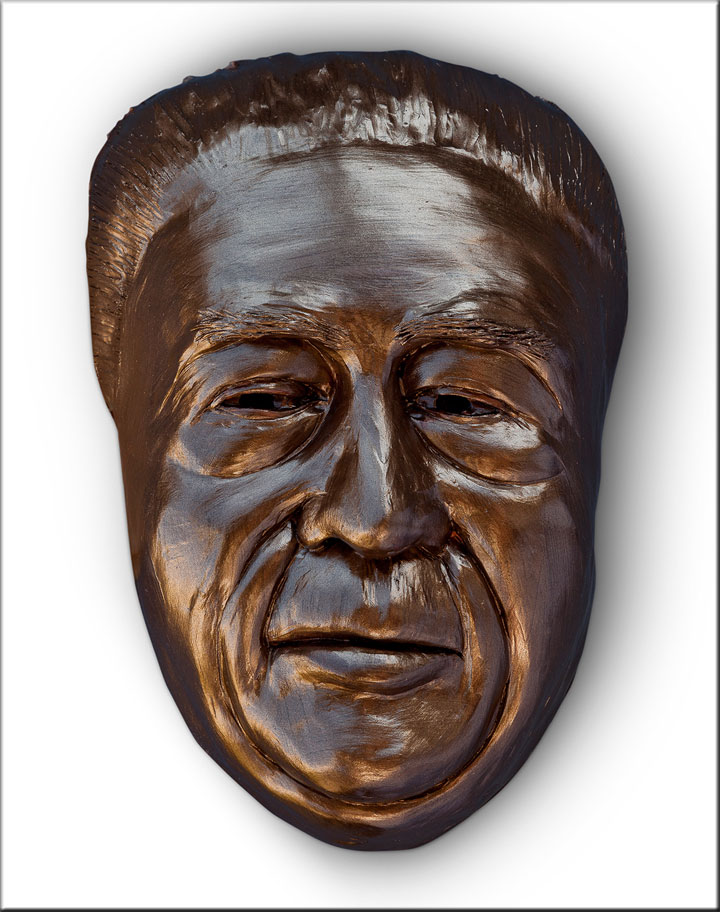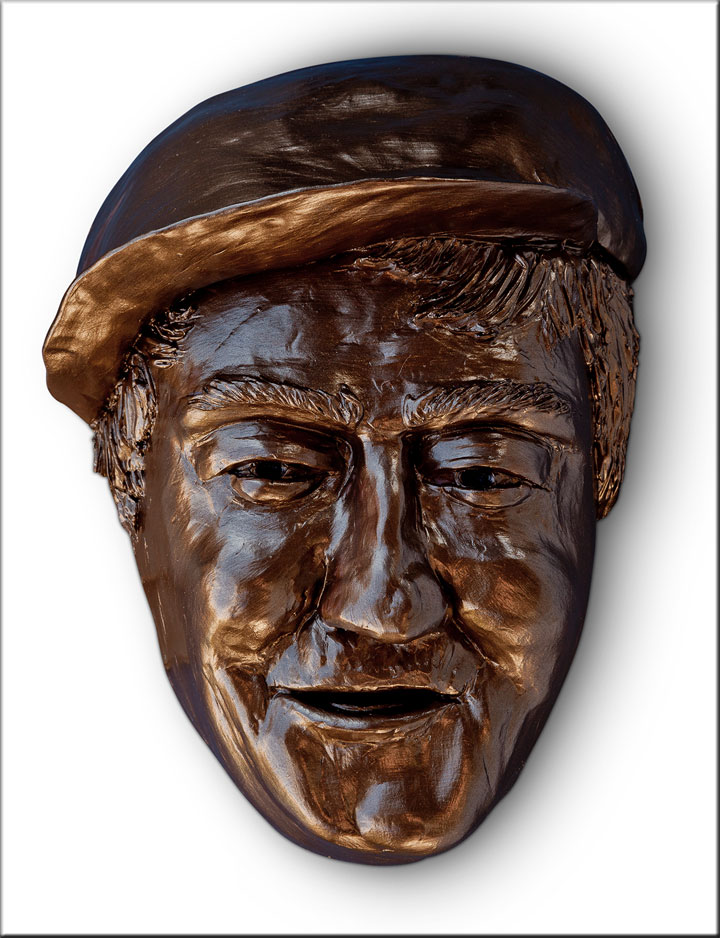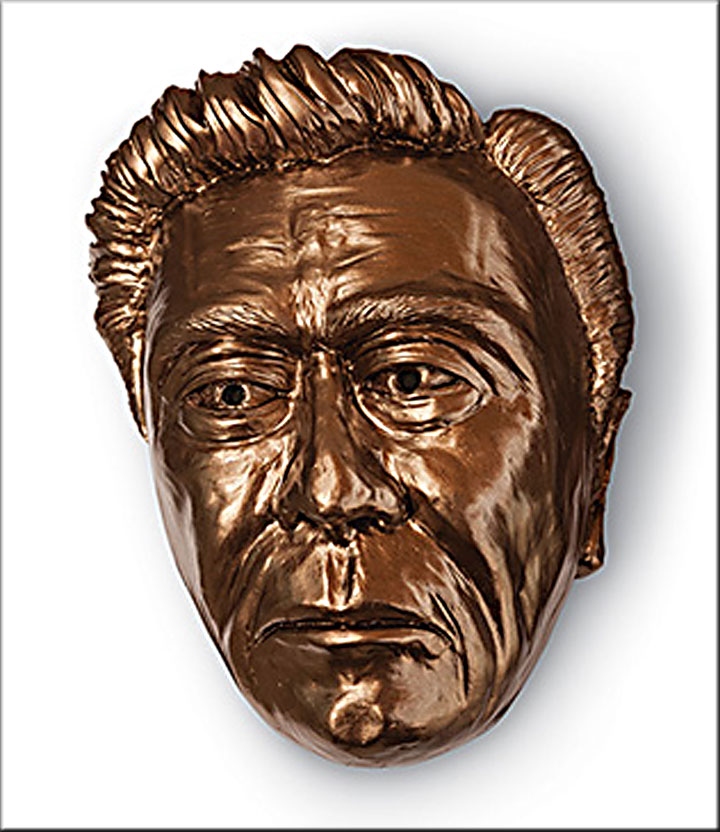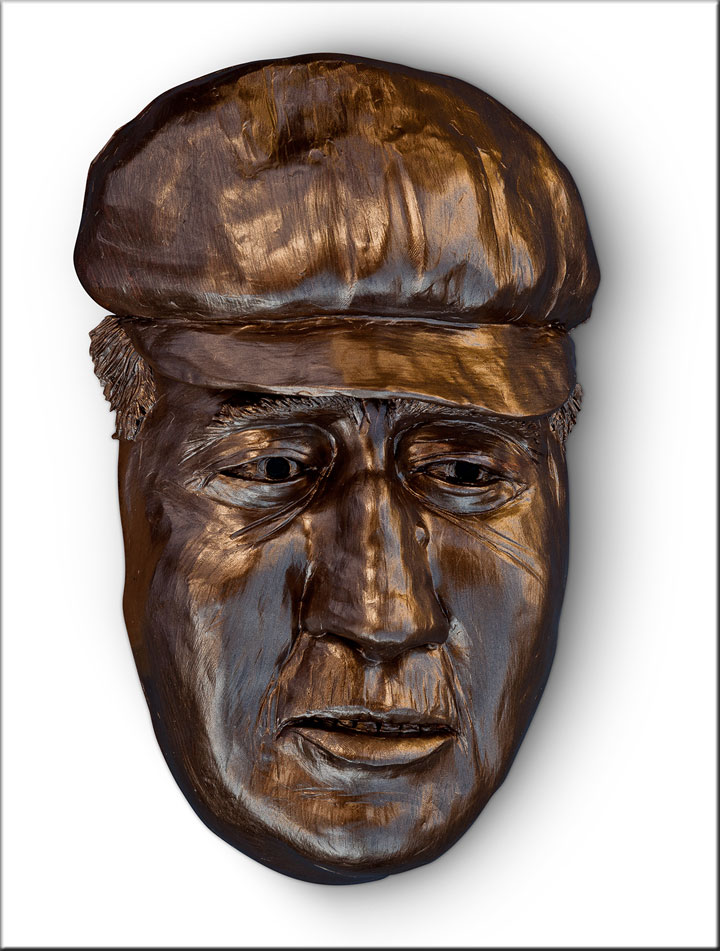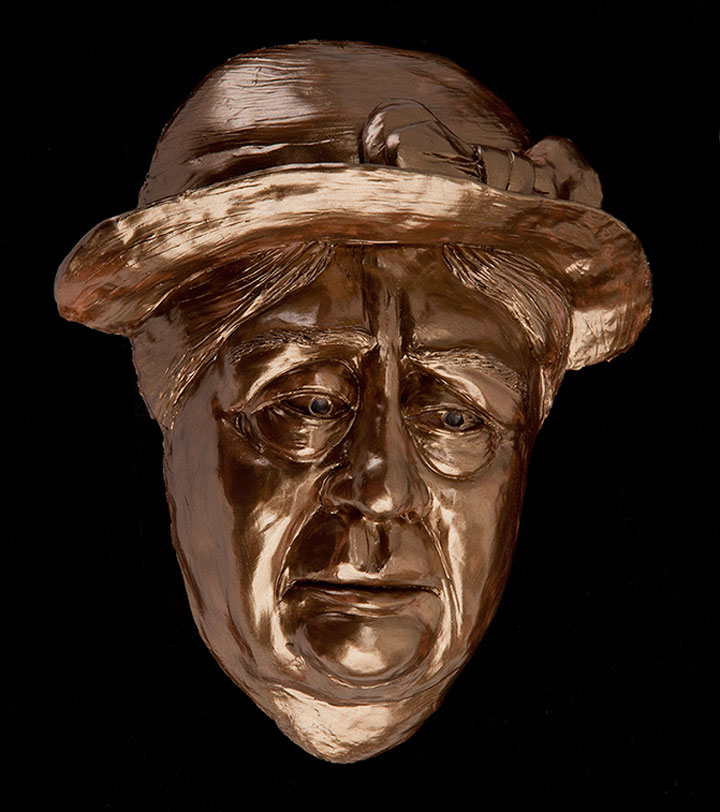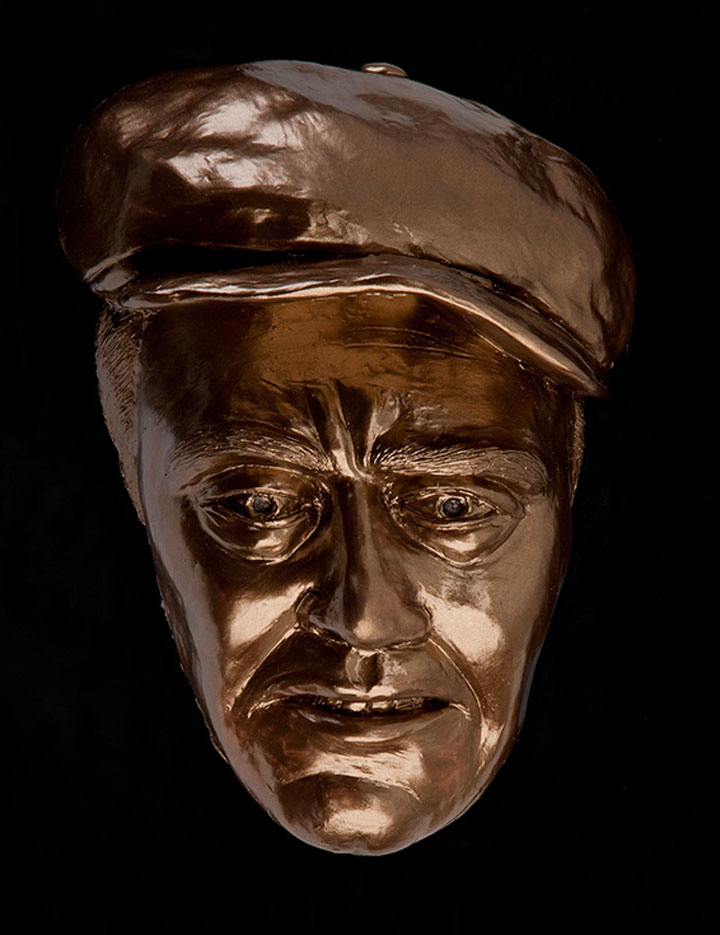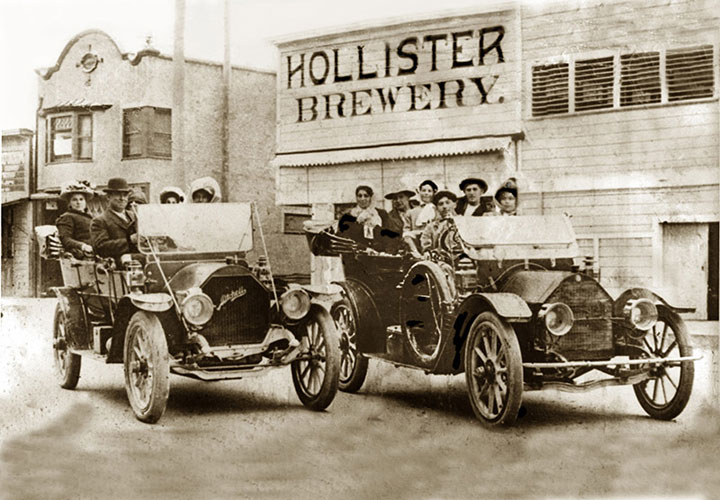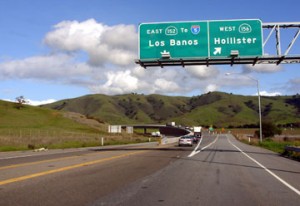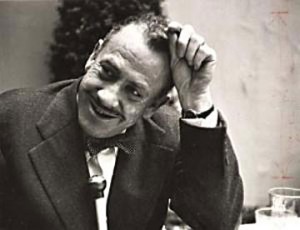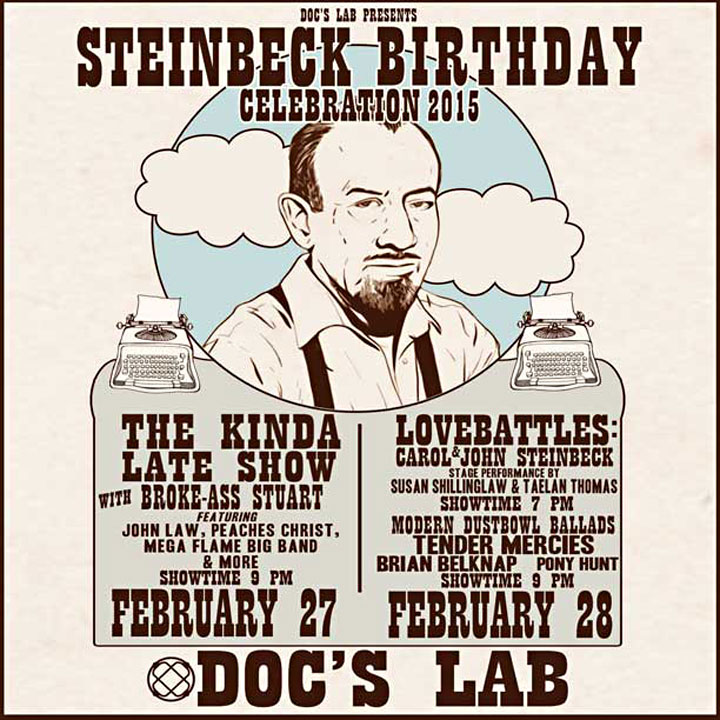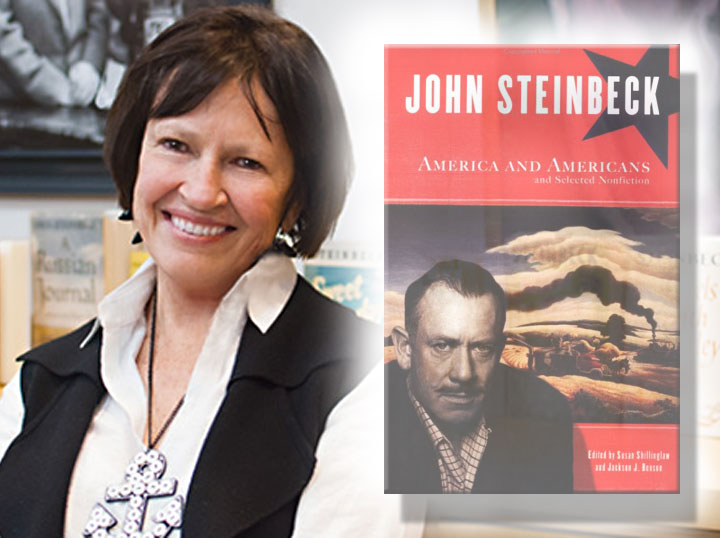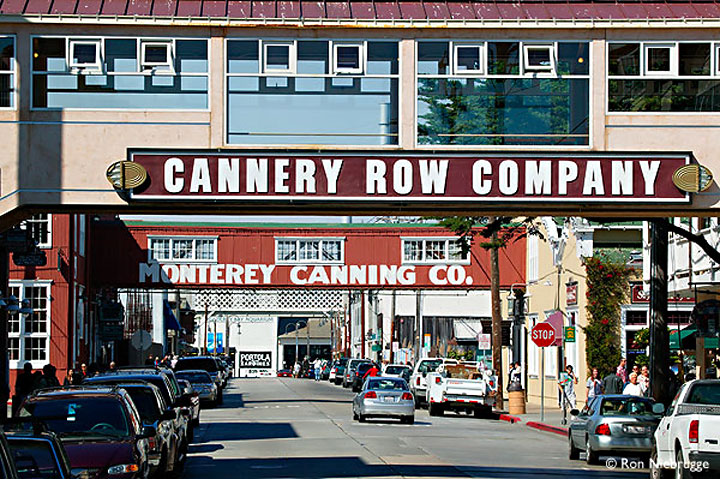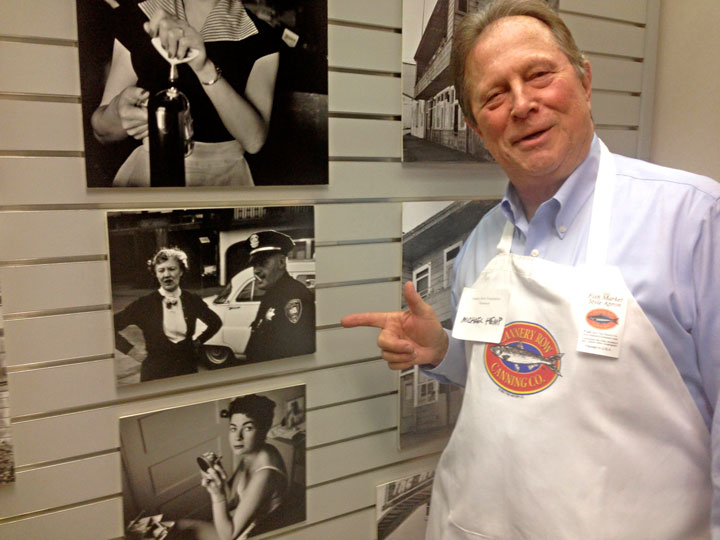John Steinbeck and Ed Ricketts’s legendary expedition from Monterey Bay to the Sea of Cortez 75 years ago was celebrated in a February 21 symposium organized by Cannery Row historian Michael Kenneth Hemp and sponsored by the not-for-profit Cannery Row Foundation. Richard Astro—an academic superstar who first identified the John Steinbeck-Ed Ricketts relationship as a reason for the enduring appeal of The Grapes of Wrath—was the opening speaker at the Pacific Grove, California event, establishing the context for a day of rediscovery, revival, and some surprising news.
The Pioneer Who Blazed the Steinbeck-Ricketts Trail
Astro, former provost and current professor at Drexel University, finished writing his doctoral dissertation on Steinbeck the day the author died in 1968. The budding scholar’s first book, John Steinbeck and Edward F. Ricketts: The Shaping of a Novelist, appeared in 1973, setting the stage for Steinbeck research that continues to this day. In a distinguished career as a university administrator and writer about American literature, Astro—along with his ebullient wife Betty—divides his time between Philadelphia and Florida. Their return to Pacific Grove after a 10-year absence was welcome, and the early-morning audience was energized by Astro’s straight talk about Steinbeck and scholarship, his signature as a public speaker.
Astro’s first book, John Steinbeck and Edward F. Ricketts: The Shaping of a Novelist, appeared in 1973, setting the stage for Steinbeck research that continues to this day.
Astro got his PhD at the University of Washington and his first teaching job at Oregon State. At the time John Steinbeck was considered a has-been by critics, but Astro has a contrarian streak and choice and chance were on his side when he selected Steinbeck as his subject. An unsolicited visit from Joel Hedgepeth, a scientific colleague of Ricketts also teaching in Oregon, led to a meeting with Ricketts’s son, Ed Jr., who gave Astro letters between Steinbeck and Ricketts that no one else had seen. The senior Ricketts died in 1948, but others who knew Steinbeck well were still alive—celebrities types like Burgess Meredith and Henry Fonda, friends from Monterey Bay days, former and current wives—and Astro interviewed each.
At the time John Steinbeck was considered a has-been by critics, but Astro has a contrarian streak and choice and chance were on his side when he selected Steinbeck as his subject.
Occasionally, as with Steinbeck’s wife Carol Henning, there were moments of psychodrama that Astro learned to manage, gaining a useful ability to separate fact from fiction about Steinbeck’s complicated life. Ed Ricketts, a Monterey Bay biologist whose name was unknown to the public at the time, kept coming up in the process. Astro borrowed Ricketts’s metaphor—“breaking-through”—in describing the excitement he felt when he discovered Ricketts’s pervasive presence in Steinbeck’s best writing, including The Grapes of Wrath. As a result Steinbeck scholarship advanced rapidly, but Astro was modest about his role: “I set the table; those who followed cooked the dinner.”
As a result Steinbeck scholarship advanced rapidly, but Astro was modest about his role: ‘I set the table; those who followed cooked the dinner.’
Ricketts and Steinbeck first met in 1930, forging an intimate friendship that survived multiple partners, married and otherwise, and provided Steinbeck material for his fiction. Occasional rivalry rocked the boat, including relations with Joseph Campbell, who broke with Steinbeck after an emotional disagreement but continued to correspond with Ricketts, who possessed a knack for being loved by everybody. With money from The Grapes of Wrath, Steinbeck and Ricketts hired The Western Flyer in 1940 and explored the Gulf of California, describing the experience in a book, Sea of Cortez, published three days before Pearl Harbor.
With money from The Grapes of Wrath, Steinbeck and Ricketts hired The Western Flyer in 1940 and explored the Gulf of California, describing the experience in Sea of Cortez, published three days before Pearl Harbor.
Reissued in 1995 with an indispensable introduction by Richard Astro, Sea of Cortez comprises the core of Steinbeck and Ricketts’s collaborative thinking about God, man, and nature. In his remarks, Astro noted that the spirit of Ed Ricketts is also present in The Grapes of Wrath, where Ricketts appears as the questioning preacher Jim Casy, whose thinking about belief and behavior are essential to Steinbeck’s purpose in the novel. Other artists of the era—Oklahoma novelist Sonora Babb, New Deal filmmaker Pare Lorentz—also documented the Dust Bowl and Great Depression, but Astro observed that their works quickly became period pieces while The Grapes of Wrath, underpinned by Steinbeck and Ricketts’s collaborative philosophy, “transcends time and place, as valid now as the day it was written.”
How to Avoid Drowning in Sea of Cortez Scholarship
Perhaps no star in the current constellation of Steinbeck scholars has done more to complete the table set by Richard Astro than Susan Shillinglaw, author of Carol and John Steinbeck: Portrait of a Marriage and On Reading The Grapes of Wrath and the writer and editor of essays on Steinbeck and Ricketts’s environmentalism. A professor of English at San Jose State University who lives in the Monterey Bay area, she spoke on “Layered Fiction and Deep Ecology: John, Ed, Carol, and The Grapes of Wrath” at the conclusion of the Cannery Row symposium. Like Astro, she has a gift for expressing ideas clearly to the non-specialist audience attracted by Steinbeck’s works. (Shillinglaw met her husband, a marine biologist at Stanford University, when he was chief scientist on a 2004 voyage that recreated the Sea of Cortez trip taken by The Western Flyer.)
Like Richard Astro, Susan Shillinglaw has a gift for expressing ideas clearly to the non-specialist audience attracted by John Steinbeck’s works.
Bob Enea, a descendant of the colorful Western Flyer crew member Sparky Enea and the ship’s captain Tony Berry, recounted the rise and fall of the Monterey Bay fishing industry, describing the day Ricketts and Steinbeck left Monterey Bay for their Sea of Cortez journey after a bon-voyage party remembered as Cannery Row’s biggest bash ever. The symposium’s energetic organizer, Michael Hemp, spoke on “Cannery Row: The Industrial Stage for John Steinbeck’s Cannery Row Fiction.” Steven Federle, a John Steinbeck scholar at Solano College, discussed the provenance of Steinbeck’s libidinous short story “The Snake,” a psychological curiosity set in Ricketts’s lab on Cannery Row. Don Kohrs, librarian at Stanford’s Hopkins Marine Station, enumerated the obstacles Ricketts faced in finishing Between Pacific Tides, the textbook published by Stanford in 1939. Kohrs also described materials, including Ed Ricketts’s famous index-card file, from the collection at Hopkins, where Steinbeck took a summer course in biology several years before meeting Ed Ricketts.
A Pair of Cannery Row Films and Western Flyer News
In publicity for the symposium the Cannery Row Foundation promised variety and surprise and delivered both. Eva Lothar, a French medical doctor who created the 1973 cinematic poem Street of the Sardine, spoke about moving to the Monterey Bay area as a young widow shortly after the Cannery Row sardine supply collapsed. (Her story about filming Street of the Sardine, shown at the symposium, is the subject of an upcoming SteinbeckNow.com video special.) Monterey Bay-area filmmakers Steve and Mary Albert exhibited their impressive documentary, The Great Tide Pool, causing a viewer to say she wished Steinbeck and Ricketts were alive to see both films, one interpreting Cannery Row ecology as poetry, the other as prose.
A viewer said she wished Steinbeck and Ricketts were alive to see the pair of films, one interpreting Cannery Row ecology as poetry, the other as prose.
Two speakers not listed on the printed program provided the surprise promised before the symposium began. John and Andy Gregg, businessmen-brothers, announced that they were buying The Western Flyer to restore and return the legendary vessel to its Monterey Bay home as a permanent educational resource for students and, perhaps, visitors to Cannery Row. The Greggs operate a geophysical investigation and marine drilling business, the kind of know-how that makes success in meeting that objective seem likely. Their straight answers to cost-and-schedule questions were as impressive as their goal: to assure that the boat used by the Prince of Tides and the author of The Grapes of Wrath to explore the Sea of Cortez will survive as long as John Steinbeck, Ed Ricketts, and Monterey Bay continue to matter.
Jim Kent: Symposium a Tipping Point for Cannery Row?
A frequent Cannery Row visitor who applies Steinbeck and Ricketts’s insights in his international consulting business flew from Colorado to attend the symposium. Asked for his reaction, Jim Kent expressed delight at the event’s energy and renewed optimism about Cannery Row’s future. “Don Kohrs got us excited when we learned that he has been assembling writings and other material of Ed Ricketts owned by the Hopkins Marine Station,” he explained. “Don located Ricketts’s legendary index cards,” detailing scientific specifics of unusual marine specimens from Monterey Bay tagged by the Prince of Tides as early as 1928. “Ricketts was a thinker and Steinbeck’s friend, but he was first and foremost a scientist,” Kent noted. “This dimension has been lost in academic writing about the characters Steinbeck based on Ricketts, and it’s great to see the Ricketts revival beginning here, where it all started.”
Jim Kent, a frequent Cannery Row visitor, observed, ‘It’s great to see the Ricketts revival beginning here, where it all started.’
Kent added that the symposium marked a new phase in public appreciation of John Steinbeck, Ed Ricketts, and Cannery Row. “My understanding of Steinbeck and Ricketts’s social ecology taught me how to bypass top-down thinking in working with community groups to make changes that benefit people, not just profit,” he said. “Ed Ricketts and John Steinbeck understood the importance of gathering places, informal networks, affinity-relationships, and bottom-up change. What I heard today leaves old ways of conceiving Cannery Row, Monterey Bay, and Steinbeck studies in the dust. Steinbeck and Ricketts saw ecological collapse coming when nobody would listen. I am sure they could see this, too!”
Image of Ed Ricketts from the historical photograph collection of Pat Hathaway, featured in the Winter 2015 issue of Carmel magazine.
